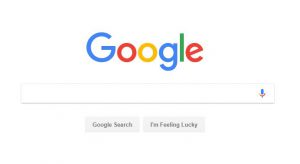Everybody knows Google, much to the pleasure of Google itself. Google is one of the largest brands in the world and the best known. If you’ve used the internet odds are pretty good you’ve been to a Google site. The brand-and their titular search engine-is so ubiquitous that it’s far from uncommon to hear somebody refer to the very act of searching the internet as “googling.” It’s even in the Merriam-Webster dictionary as a verb meaning to search the internet. This is the product of incredible marketing and market positioning. It also has the potential to shoot Google in the foot.
When Merriam made their changes, Google made a blog post which carefully explained that the addition-while flattering-should exclusively be used when referring to searching the internet with Google itself. This is because of concept in trademark known as genericide-losing trademark protection because your trademark becomes interchangeable in the public’s eyes with the type of product itself. Kleenex, trampolines, elevators, aspirin, cellophane, zippers, thermos, xerox, linoleum, band-aids. All very common products with one thing in common, they were once brand names that were so popular they lost protection by becoming generic terms for the product they are associated with.
Google has long fought, as with their Merriam-Webster post, to maintain their brand in the face of a public that might lead them to genericide through popularity. Now, there’s a chance Google will have to defend its mark in front of the highest court in the land-the Supreme Court of the United States.


The lawsuit currently seeking to be heard by the Supreme Court is already half a decade old. It deals with one Chris Gillespie who registered a whopping 763 domain names following a singular formula-google[insert popular word here].com. Everything from “googledonaldtrump.com” to “googledisney.com.” Google obviously didn’t care for this and hit Gillespie with a cybersquatting complaint. Cybersquatting claims kick somebody off a domain name where they buy it with a bad faith intent to profit off another’s trademark. Gillespie, unsurprisingly, lost his domains. He then appealed saying that Google didn’t properly have a mark in the first place due to genericide. He lost that one too, however, the ruling on the case left room for his appeal to the Supreme Court. To understand his appeal, let’s take a look at exactly how genericide works.
Understanding Genericide
Trademark law itself provides protection to registered words or symbols used to represent a brand of good or service–guarding against others using the mark in a way that could confuse consumers as to source or sponsorship. It does this through trademarks, service marks, and a few other types of mark protection. Genericide, however, is an issue of the strength and registrability of a trademark.
The strength of a trademark is judged by its distinctiveness, the more distinctive the mark the greater protection it receives. A mark with an arbitrary relationship to the good it represents (such as Apple computers) or a totally made up word as a mark (such as Kodak) would receive the strongest protection and can always be registered with the Patent and Trademark Office (PTO). A mark that suggests a quality of the good it is a mark for, such as Greyhound describing a swift form of transportation, can always receive trademark protection but have less strength than a fanciful or arbitrary mark.
Below these types of marks on the protection totem pole are descriptive marks–marks that actually describe some part of the good or service. A good example of a descriptive trademark is All-Bran brand cereal, the brand actually describes the type of cereal sold. Descriptive marks may only receive protection so long as the mark is associated with the product or service in the eyes of the public. This is known as acquiring secondary meaning and generally takes some serious marketing and several years in the marketplace. Five years is a pretty common number to see in relation to acquiring secondary meaning, but it has more to do with the thoughts of the public than any hard and fast period of time.
Finally, the very bottom of heap when it comes to trademarks is–you guessed it–generic trademarks. Generic trademarks are marks that are the common name for the product or service sold. For example, Bread brand bread would be generic. Generic marks are can never be registered as protected trademarks in the first place. Genericide occurs, as we discussed above, where the average consumer considers your mark a generic term for an entire class of product or service.
“Googling” something is a common term, it’s easy to see why it might be a target for this sort of lawsuit. However, the courts drew a distinction between how the public uses a mark and how they perceive it.
The Ruling in Favor of Google
Gillespie’s case focused on evidence of how often “google” was used as a verb. It showed rap lyrics using the term as a verb, it showed how often the public used it in that manner, it pointed to the dictionary definition of “googling.” What it didn’t do was show that Google was interchangeable with search engine products.
The court made a new distinction in approaching genericide-indiscriminate versus discriminate use. The determination of genericide hinges on how the public uses and views the mark. The court here made a distinction between whether the public refers to googling in reference to all search engines but with the actual Google search engine in mind or if they are referring to all search engines as Google. The issue was simply that, while Gillespie had quite a bit of evidence of the public using the term “google” to refer to the act of using a search engine. He provided basically no evidence that the term “google” wasn’t used for search engines that aren’t Google. In the case of Kleenex, this was easily proven by the interchangeable use of Kleenex and tissue. Kleenex was a branded adjective describing tissue and people were just asking for a Kleenex-thus generic. Where the term is turned into a verb, the court wasn’t ready to make the same link as a verb didn’t necessarily show the same link.
This didn’t make it impossible to use “verbification” to say something is generic, but the ruling certainly made it a lot harder-much to the pleasure of Google and other brands such as Adobe who are battling genericide as all altered photos are described as “photoshopped.”
This ruling had just enough new law to it to merit an appeal to the Supreme Court, and Gillespie has done exactly that.
Will Supreme Court Hear the Case?
Statistically no. The Supreme Court hears only a very small portion of the cases before it and generally only choose case dealing with unsettled issues of law which impact the entire nation as opposed to evidentiary issues.
However, the lower court ruling-while restricted to the 9th Circuit-has some serious potential impact. Turning brands into verbs is common. Gillespie’s request to be heard by the Supreme Court highlights windexing windows, tasering suspects, and photoshopping pictures. The ruling makes it much harder to consider any of the marks associated with these verbs generic. That’s a serious change in legal approach. The Supreme Court may yet hear the case.
Either way, this is not the first genericide lawsuit Google has faced and is unlikely to be the last. Google has entered common parlance due to its own success. However, they take steps like the response to Merriam-Webster mentioned above to try and ensure they avoid genericide. These are steps you too can take with your own businesses-always using the type of product in conjunction with your brand (Google search engine), always capitalizing your mark when you use it, avoiding using your mark as a noun or verb in your own materials (Google themselves break this rule sometimes by using their name as a verb), and-as Google did-posting materials correcting others where they use your mark as a generic term for your product.
